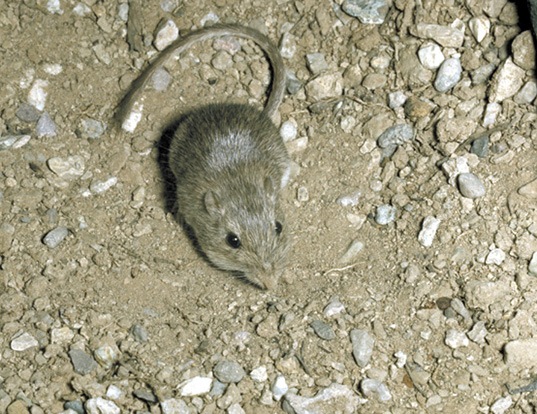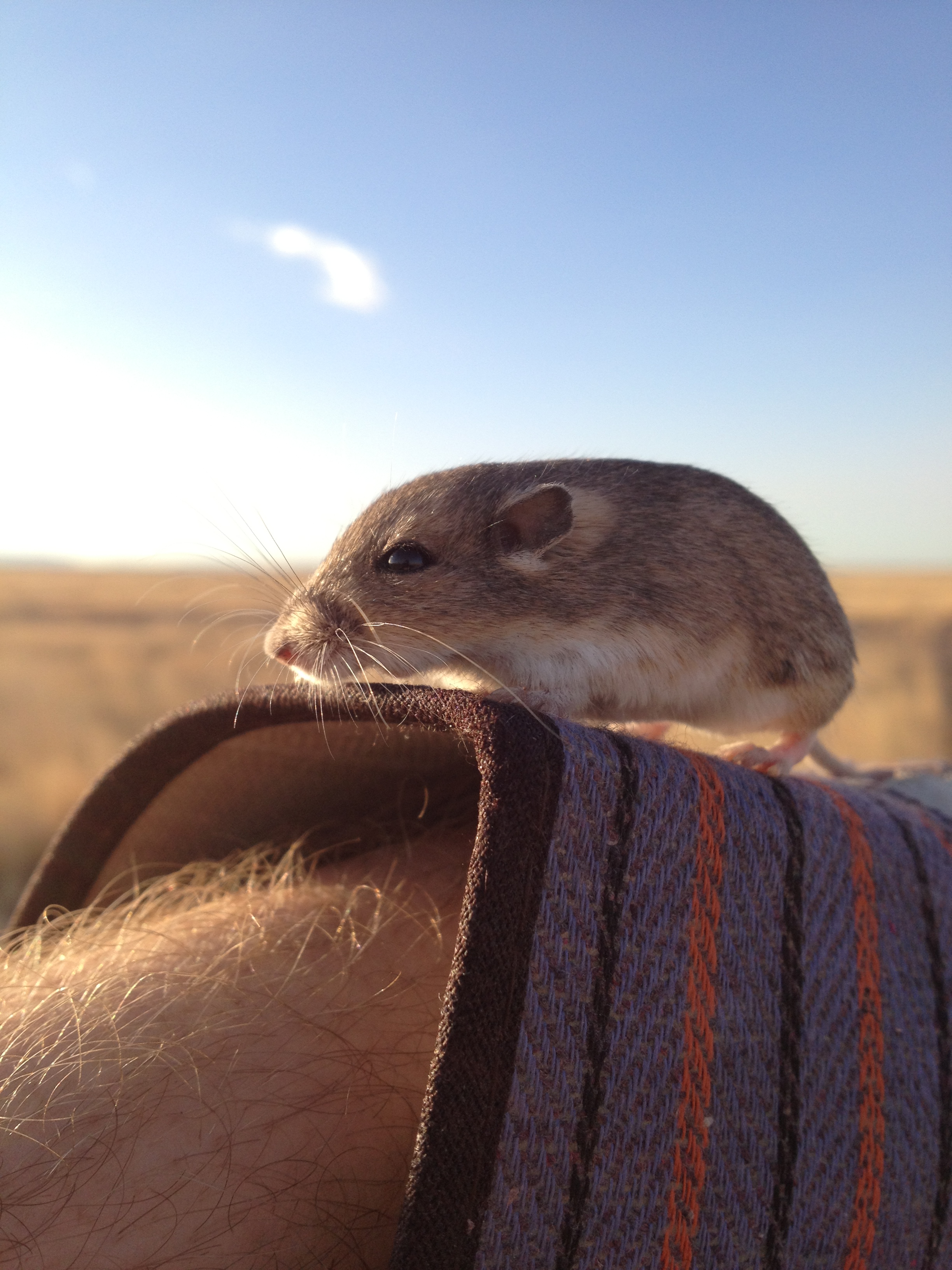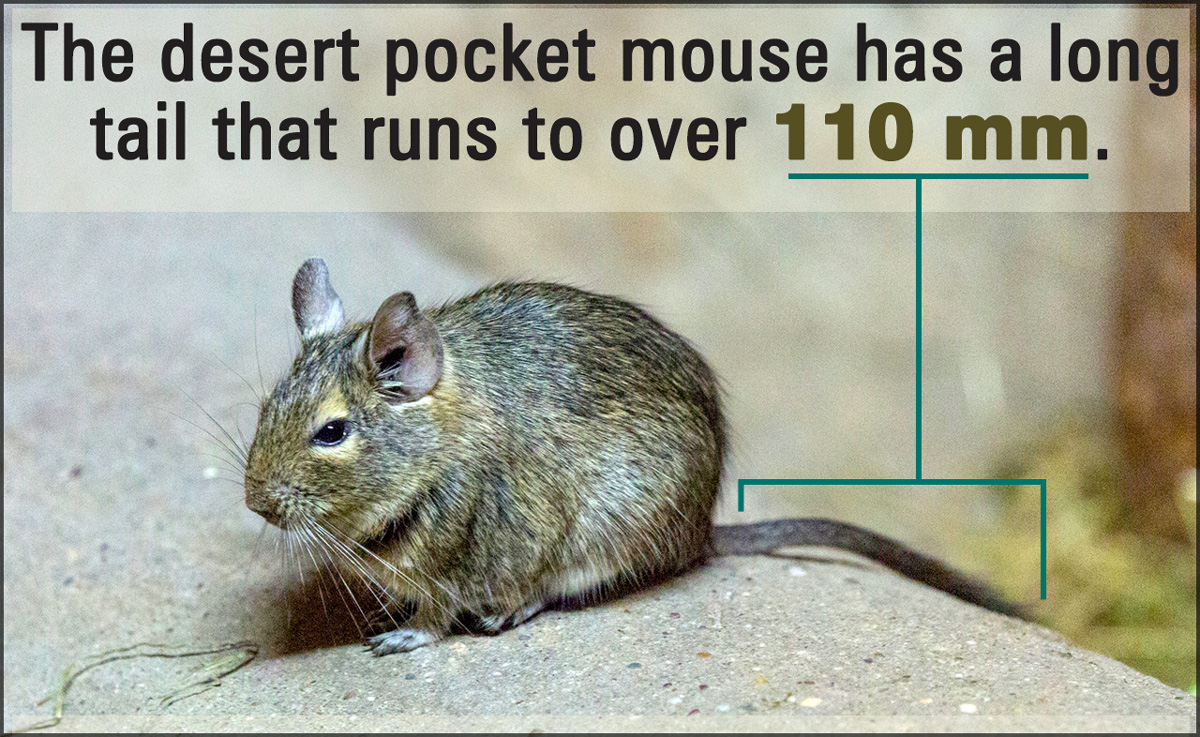
Larger and medium sized kangaroo rats drum their feet in order to chase away competing males. Mating relationships range from one male and one female, to several males competing for access to one breeding female. Males always travel to female territories during breeding season in order to mate. Desert heteromyids also have strong hearing that lets them hear approaching predators. If needed, they will run away along a crooked path. When a predator, an animal that hunts other animals, is seen, heteromyids use their body coloring to hide and avoid them. Their scent informs other heteromyids and other animals about their sex, identity and mating status. They regularly bathe in sand, which helps to clean their hair and to deposit their scents onto the ground.

Females occupy a territory that contains no other females. Male home territories overlap with those of other males and females. Each species has its own set of drumming patterns, which are heard through the air and ground. Medium- and large-sized kangaroo rats communicate by drumming or thumping the ground with their large hind feet familiar thumping identifies neighbors, while strangers are not recognized. Heteromyids have well-developed communication systems. Most species burrow tunnel systems with multiple chambers and surface openings. They do interact with nearby neighbors, which are often relatives. They have a very basic social structure, mostly living alone except for females and young. Kangaroo rats and mice move about mostly by hopping on their hind limbs, while pocket mice use all four of their limbs in a walking motion. Heteromyids are nocturnal, active at night, rodents. Heteromyids defend their territory aggressively when they have collected many seeds. When pouches are full, they return to one of their caches (KASH-uhz), hidden supply areas, which are used throughout the animal's home range. They leave their burrows at night to dig through soil with their forelimbs to gather seeds into their cheek pouches. Desert species can go without water for long periods of time. Heteromyids eat mostly seeds, but also eat green vegetation and, in some species, insects. In all cases, heteromyids like areas that contain many seeds. Desert pocket mice and kangaroo rats like arid, dry, climates that contain sand, scrubs, sagebrush, grasses, and chaparral. Heteromyids live in deserts, dry grasslands, and, in a few cases, wet and dry tropical forests. Heteromyids are found in the western United States, southwestern Canada, Mexico, Central America, and northern South America. Kangaroo rats weigh between 1.2 and 6.9 ounces (33 and 195 grams) kangaroo mice weigh between 0.4 and 0.6 ounces (10 and 17 grams) and pocket mice weigh between 0.2 and 3.0 ounces (5 and 85 grams). The coat color varies from light to dark, depending on species and habitat, often matching the soil color on which they live.Īdults are 1.7 to 14.6 inches (4.3 to 37 centimeters) long and weigh between 0.2 and 6.9 ounces (5 and 195 grams). Kangaroo rats and mice have soft and silky fur, while pocket mice have coats that range from silky to spiny.

Kangaroo rats and mice have good hearing. Pocket mice have shorter, less noticeable tails. Kangaroo rats and mice have long tails with white tips or tufts on the end, along with relatively short front limbs. Pocket mice use all four feet while walking, while kangaroo rats and mice use only their rear two feet for walking.

They have fairly large eyes and short, rounded ears. The pouches open in front of the mouth and go back along the shoulders. Pocket mice, kangaroo rats, and kangaroo mice, sometimes called heteromyids (members of the family Heteromyidae), are small- to medium-sized rodents with external, fur-lined cheek pouches. GIANT KANGAROO RAT ( Dipodomys ingens): SPECIES ACCOUNTS POCKET MICE, KANGAROO RATS, AND KANGAROO MICE: Heteromyidae SAN JOAQUIN POCKET MOUSE ( Perognathus inornatus): SPECIES ACCOUNTS


 0 kommentar(er)
0 kommentar(er)
